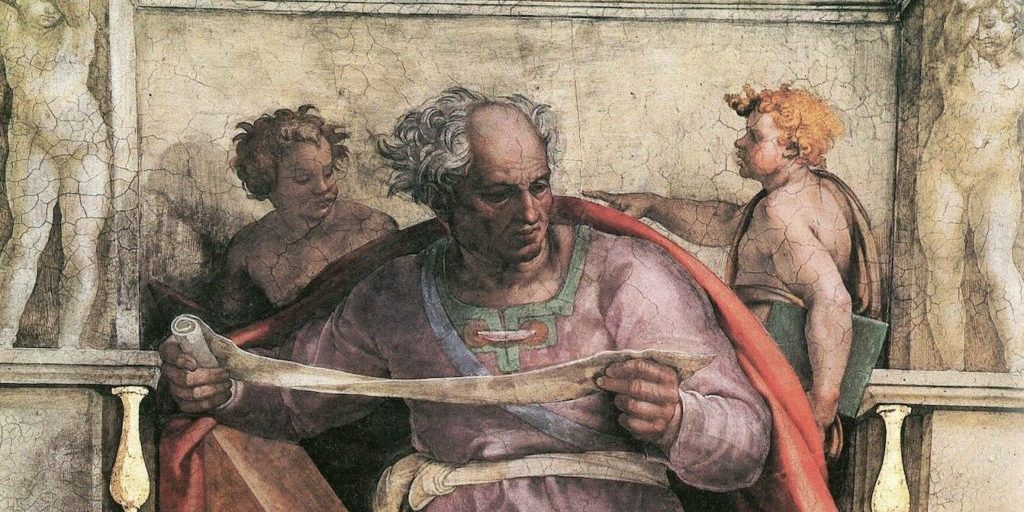
How to Read Joel Theologically: Part Two
The incipit of Hosea suggests that Hosea and Isaiah (and Micah) are connected by the mention of Judah’s kings, “Uzziah, Jotham, Ahaz and Hezekiah, kings of Judah” (Isa. 1:1; Hos. 1:1).[1] Hosea, a prophet to Israel, is to be read not only in connection with Amos, but also with Isaiah! Though Joel does not include any chronological markers, the opening of the book suggests an Isaianic association. Compare, Isaiah’s opening — “The vision … that Isaiah son of Amoz saw … Hear, O heavens! Listen, O earth! For the LORD has spoken. … Hear the word of the LORD, you rulers of Sodom; listen to the law of our God, you people of Gomorrah!” (1:1-2, 10, emphasis mine) with Joel — “The word of the LORD that came to Joel son of Pethuel. Hear this, you elders; listen, all who live in the land (1:1-2; emphasis mine).[2] The pathway of Joel takes his readers on a trajectory reminiscent of the great prophet Isaiah by the thematic developments of the Day of the Lord, the era of the Holy Spirit, and a new creation.[3]
The Day of the Lord
Joel’s imagery of the locust plague forms the background of the imagery of the Day of the Lord. The story of the devastating locust plague is a parable to be told and retold from generation to generation (1:3; cf. Psa. 78:1-4). It was to serve as part of Israel’s collective memory much like the story of Israel’s redemption from Egypt at which time the plague of the locusts, the eighth plague in Egypt (Exod. 10), saw God’s power over small creatures that appear to be infinite in number and in appetite. Everything edible was devoured by the locusts, “They devoured all that was left after the hail everything growing in the fields and the fruit on the trees. Nothing green remained on tree or plant in all the land of Egypt” (Exod. 10:15). The “almighty” power of Egypt was broken by the God of Israel (Exod. 10:6, 14). The Egyptians suffered, and Israel was shielded.
Moses had forewarned Israel that God could also strike her with horticultural plagues: locusts, worms, and plant diseases (Deut. 28:38-40, 42) because of disobedience (v. 47). Israel would go into exile and was to be scattered among the nations (v. 49). Isaiah appropriated Moses’ judgment in describing the devastation on Judah and Jerusalem (Isa. 1:5-8). Compare Isaiah – “Wail, for the day of the LORD is near; it will come like destruction from the Almighty” (Isa 13:6) with Joel – “Alas for that day! For the day of the LORD is near; it will come like destruction from the Almighty” (Joel 1:15; cf. 3:14; Ezek. 30:2-3; Zeph. 1:14-15). The description of the Day of the Lord is equally similar. Compare Isaiah – “See, the day of the LORD is coming a cruel day, with wrath and fierce anger to make the land desolate and destroy the sinners within it. The stars of heaven and their constellations will not show their light. The rising sun will be darkened and the moon will not give its light” (13:9-10) – with Joel — “for the day of the LORD is coming. It is close at hand a day of darkness and gloom, a day of clouds and blackness. Like dawn spreading across the mountains a large and mighty army comes, such as never was of old nor ever will be in ages to come. Before them the earth shakes, the sky trembles, the sun and moon are darkened, and the stars no longer shine” (Joel 2:1b, 2, 10; cf. Rev. 6:12-13; 8:12).
The tragedy of the locust plague frames the theological theme of the Day of the Lord. Joel moves from lament to awe, from concern with one’s future to a vision of that awesome day of salvation and judgment. Several associations evoke a sense of wonder: the blowing of a horn as a call to arms, Zion/the holy hill, the proximity of the “Day,” darkness, war, fire, the transformation of creation to a wasteland, chariots, troop movements, invasion, burgling, and earthquake (2:1-10). Theophanic imagery unveils the horror, destabilization, and dread associated with God’s coming into his creation, “The LORD thunders at the head of his army; his forces are beyond number, and mighty are those who obey his command. The day of the LORD is great; it is dreadful. Who can endure it?” (Joel 2:11; cf. Zeph. 1:14-15).
The Era of the Spirit
Joel’s vision of the outpouring of the Holy Spirit (2:28-32) parallels that of Isaiah (33:15-20; 44:3-5; 59:21; cf. Ezek. 39:29). The Spirit comes on all flesh, young and old, male and female, free or servant. (cf. Acts 2:1-13. The Spirit of God will be poured out on all who call on the name of the Lord and are called by God (Joel 2:28-32). The Spirit assures the godly of God’s presence and blessing (2:18-27; ch. 3). Thus, Moses’ prayer that the Spirit would come on all (Num. 11:28) would be answered. Like Moses, the leaders, prophets, and kings, all God’s people will receive the gift of the Spirit and participate in the new creation (2:30-31; cf. Isa. 11:2-5; 42:1; 44:3-5). Isaiah also opens the vista of the cosmic transformation of the old creation into an era of the Spirit with its concomitant transformation as an era of justice, righteousness, peace, and quietness (Isa. 32:15-20). Isaiah and Joel envision the outpouring of God’s Spirit on creation and people as a mark of the blessedness of the new creation (see Rom. 8:11-38). Isaiah and Joel envision the outpouring of God’s Spirit on creation and people as a mark of the blessedness of the new creation. Click To Tweet
Joel called for a wholehearted return to Yahweh “with fasting and weeping and mourning” as expressions of true and heartfelt repentance (2:12-14), remembering God’s covenantal fidelity, “for he is gracious and compassionate, slow to anger and abounding in love, and he relents from sending calamity” (2:15). After all, the day of cosmic upheaval will be gloriously transformed because of God’s presence and promises (2:18-32), “Then you will know that I am in Israel, that I am the LORD your God, and that there is no other; never again will my people be shamed” (2:27). God’s presence will transform shame to joy, deprivation to full contentment, and hostility to an era of peace (2:18-26). The outpouring of the Spirit of God “on all people” who call on the name of the Lord confirms the reality of the prophetic vision (2:28-32; cf. Rom. 10:13). The restoration of creation suggests fullness and freedom of God’s people who experience his presence, protection, and provision. God has spoken, but he has also sent his Spirit to confirm the promises (Rom. 8:14-39) that are yes and amen in Jesus Christ (2 Cor. 1:20).
Vistas of a New Creation
The God who brought an end to the locust plague will bring an end to evil. He holds the nations accountable for their antagonistic treatment of God’s children (Joel 3) when he inaugurates a new creation.
Zion
Joel has affinities with Isaiah in his concern for Zion theology. Zion is God’s “holy hill” (2:1; 3:17; cf. Isa. 4:3; 11:9; 27:13; 56:9; 57:13b; 60:14). Zion represents the new community of God’s people, who anticipate with joy God’s presence and blessing (2:23). He will be their refuge, “a stronghold for the people of Israel” (3:16; cf. Obad. 1:17). Never again will they suffer defeat or affliction, because God dwells with his people (3:17, 21; cf. Isa. 12:6; 52:1; Zech. 8:3). The incipit of Isaiah and Joel holds out hope for “Judah and Jerusalem” (1:1; cf. 2:1; 3:1), but Amos speaks of God’s judgment on Zion (1:2) and on Zion’s arrogant inhabitants of Zion (6:1), while holding out an Eden-like reversal under a Davidic king (Amos 9:11-15).
A Glorious Future
Yahweh will come to the defense of his people in the “Valley of Jehoshaphat” (Joel 3; cf. 2:18). The Valley stands a time when God will vindicate his people that will end their affliction (ch. 3). The iniquity of the nations – Tyre, Sidon, Philistia, the Greeks, Egypt, Edom – will be avenged (Joel 3). Ever before the era of international peace will transform this world (cf. Isa. 2:4), Joel envisions a world of chaos, where people “(b)eat (their) plowshares into swords and (their) pruning hooks into spears” (Joel 3:6). It will be a dark day (3:15; cf. 2:10). The Lord will be with his own, “But the LORD will be a refuge for his people, a stronghold for the people of Israel” (3:16) and will transform Zion to a sanctuary where evil will be excluded (3:17, 20). They will be overwhelmed with God’s abundance of grain, wine, oil, milk, and water (2:19, 24; 3:18; cf. Isa. 62:8; Hos. 2:21-23; Amos 9:13), because the Lord will be with his people, “The LORD dwells in Zion!” (3:21; cf. Ezek. 48:35).
Appropriations of Joel in the New Testament
The apostolic appropriations sought “to hear the original word, overtaking them and enclosing them, in the context of a new set of circumstances, constraints, hopes, and divine judgments.”[4] The book of Joel prospectively anticipates the fuller revelation of God in Jesus Christ. His resurrection is the firstfruits of the new creation, confirms the eternality and blessedness of Zion, and assures forgiveness by the gift of the Holy Spirit. Paul appropriates Joel to affirm the connections between the Spirit, the new creation, and the assurance of salvation for all who call on the name of the Lord Jesus, whether Jew or non-Jew (Rom. 8:11-38; 9:24; 10:12-14).
The apostle Peter understood the significance of the coming of the Holy Spirit (Acts 2). He associates the Spirit with salvation, forgiveness of sin, and the glorious future, “Repent, then, and turn to God, so that your sins may be wiped out, that times of refreshing may come from the Lord (Acts 3:19). Peter has captured the essence of the gospel of God’s compassion in Jesus Christ.[5]
John, the Apostle, appropriates Joel’s imagery of the Day of the Lord, “For the great day of their wrath has come, and who can stand?”” (Rev. 6:17; cf. Joel 2:11; see Rev. 6:12-13; 8:12). The time for “harvest” has come, “Swing the sickle, for the harvest is ripe. Come, trample the grapes, for the winepress is full and the vats overflow so great is their wickedness!`” (Joel 3:13; cf. Rev. 14:15, 18; 19:15).
*This is part two of How to Read Joel Theologically. See part one here.
Endnotes
[1] Micah should be included as well
[2] Isaiah is evidently associated with Micah by the incipit and by his call on people to hearken God’s word, ”The word of the LORD that came to Micah of Moresheth during the reigns of Jotham, Ahaz and Hezekiah, kings of Judah the vision he saw concerning Samaria and Jerusalem. Hear, O peoples, all of you, listen, O earth and all who are in it, that the Sovereign LORD may witness against you, the Lord from his holy temple” (Mic. 1:1-2; cf. 6:8; Isa. 1:10).. Joel employs the imagery of Isa. 2:2-4 and Mic. 4:1-3 in a deconstructive manner, “Beat your plowshares into swords and your pruning hooks into spears. Let the weakling say, `I am strong!` Come quickly, all you nations from every side, and assemble there. Bring down your warriors, O LORD! `Let the nations be roused; let them advance into the Valley of Jehoshaphat, for there I will sit to judge all the nations on every side. Swing the sickle, for the harvest is ripe. Come, trample the grapes, for the winepress is full and the vats overflow so great is their wickedness!`” (Joel 3:10-13).
[3] It is my intent to associate Joel with Isaiah, but a good case can be made for a much wider inclusion. After all, Joel shows extensive familiarity with earlier prophecies.
[4] Seitz, Prophecy and Hermeneutics, 129.
[5] Wolff understands the holistic message of Joel, writing “Proclamation of the coming Christ consistently concerns not only the future of the old and the new people of God, but also that of the whole world.” (Joel and Amos, 15).

